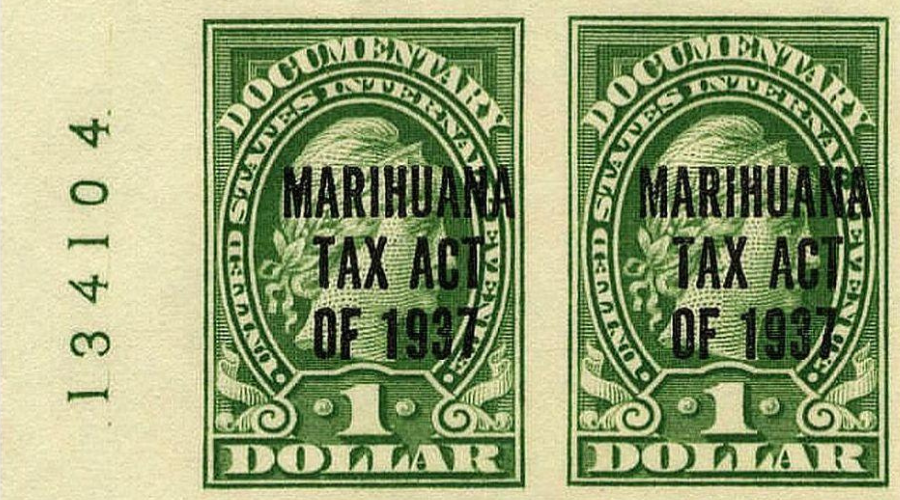It’s April, which means it’s time for Earth Month! Welcome to our blog series dedicated to one of the green wonders of the Earth, hemp. As we celebrate Earth Month, it's only fitting to delve into the historical roots of this remarkable plant and its modern resurgence, particularly in the realm of eco-conscious living and wellness.
Join us on this journey as we uncover the fascinating history of hemp, from its ancient origins to its current opportunities. And stay tuned for our whole series on hemp, to learn more about it’s benefits, sustainability, and future, along with tips on how to make your everyday health and wellness routines part of a greener world.
The Early Uses of Hemp
Hemp isn't just a recent discovery; its roots stretch far back into history. Hemp has been cultivated for tens of thousands of years, revered for its versatile uses. In ancient cultures, hemp was more than just a crop – it was deeply intertwined with daily life and played a pivotal role in various civilizations across the globe.
The Ancient Origins of Hemp
Hemp has been spun into the yarn of history for over 10,000 years. In Mesopotamia, hemp emerged as a staple commodity. Its fibers wove the ropes that tethered ships to harbors and hoisted sails that carried explorers across uncharted waters. Mesopotamian merchants prized hemp not only for its practical applications, but also for its symbolic significance, often weaving it into religious ceremonies and burial rituals.
In the heart of China, hemp adorned Confucius himself and became integral in society, which recognized hemp's multifaceted nature, utilizing it in myriad ways. From sturdy building materials and strong textiles, to the strings of musical instruments and seeds for nourishment, hemp's presence was ubiquitous. In Chinese medicine, hemp found its place among herbal remedies, believed to alleviate ailments and restore balance to the body.
The Golden Age of Sail
As humanity embarked on voyages of discovery during the golden age of exploration, hemp's significance surged. It became integral in maritime trade, with its robust fibers forming the very sinews of ships. From the ropes that held together the Spanish galleons to the canvas sails that propelled the English fleets, hemp’s strength and durability became synonymous with the very concept of progress. The sails that propelled explorers to the New World were spun from hemp fibers – in fact, “canvas” is derived from the word “cannabis”. The durability of hemp ensured the safety and success of countless expeditions, enabling the discovery and exploration of distant lands.
The Use of Hemp in War
During times of war, hemp once again took center stage. From cloth to paper and cordage, hemp was indispensable for military endeavors. Hemp became a strategic resource, fueling the war efforts of nations across the globe. Its fibers were woven into uniforms, providing soldiers with durable and resilient clothing. Hemp paper served as a crucial medium for communication and record-keeping, ensuring that the stories of heroism and sacrifice would endure for generations to come. Even the fabric of the first American flags in production bore testament to hemp's strength and resilience, embodying the spirit of a nation.

Overcoming Stigmas and Restrictions
Fast forward to more recent times, and hemp found itself at the heart of the industrial revolution. Its strong fibers made it a valuable resource for textiles, ropes, sails, and more for civilizations across the world. However, despite its widespread use, hemp faced a gradual decline due to legislative restrictions and cultural stigma.
The Legal Obstacles and Hemp's Stigma
The tide turned against hemp with the enactment of the Marihuana Tax Act of 1937, which regulated the importation, cultivation, possession, and distribution of cannabis in an attempt to reduce marijuana use. With this legislation, stringent regulations and heavy taxes were imposed on hemp. The American Medical Association opposed the tax, as “the prevention of the use of the drug for medicinal purposes can accomplish no good end whatsoever.“ In the 1940s, the Department of Agriculture and the US Army urged farmers to grow fiber hemp, using tax stamps to avoid the tax, though the lingering stigma and restrictions hindered production for years to come.
The War on Drugs
Decades after the Marihuana Tax Act of 1937, and despite the act being deemed unconstitutional in 1969, the stigma against hemp persisted in the late 20th century. The Comprehensive Drug Abuse Prevention and Control Act of 1970 repealed the 1937 Act and furthered the misconceptions around hemp, leading to a global crackdown on the cultivation and use of cannabis. This sweeping legislative action, along with the start of America’s War on Drugs in the 1970s, dealt a severe blow to the crop. Despite its non-psychoactive nature, hemp bore the brunt of misguided policies aimed at combating drug abuse.
The Environmental Renaissance
The start of the 21st century put a larger emphasis on the concern for the environment and sustainability. Hemp, a crop requiring less water, no herbicides, and minimal pesticides, found a rekindled interest as a solution to some of agriculture's woes. It also began to carve a niche for itself among the eco-conscious, serving as a model for what sustainable agriculture could achieve. With the need for more sustainable practices, though hemp production was still illegal under federal law, the 2014 Farm Bill reintroduced industrial hemp production after nearly half a decade of restrictions. This marked a significant shift towards embracing hemp's potential in building a greener future.

Hemp in the Modern Era
Recent times have seen a turning of the tide. A growing number of voices advocating for hemp is emerging, from medical to agricultural fields, championing the benefits of this remarkable plant. Consumer demand for hemp products is on the rise, reflecting a broader cultural shift towards sustainability and conscious living.
The Legal Resurgence with the 2018 Farm Bill
Thankfully, the hemp industry has seen a positive shift with the passage of the 2018 Farm Bill. Taking hemp legalization a step further than the 2014 Farm Bill that legalized industrial hemp, this groundbreaking legislation legalized hemp cultivation, established the Domestic Hemp Production Program, removed restrictions under federal drug laws, and opened up a world of opportunities for the industry. With the shackles of prohibition lifted, hemp has experienced a resurgence, particularly in the realm of CBD products. This pivotal moment has paved the way for sustainable practices and innovative uses of hemp-derived materials.
The Rise of CBD Companies and Wellness Trends
Enter the rise of CBD companies, championing the wellness benefits of hemp-derived CBD products. From tinctures and topicals to gummies and capsules, CBD has permeated various facets of the wellness industry, offering natural alternatives for holistic health enthusiasts. Beyond CBD, researchers are also exploring the potential of other cannabinoids found in hemp for a variety of health applications. Studies on compounds like CBG, CBN, THCV, and Delta 9 THC are hinting at possibilities for everything from temporary pain management to better focus, laying the groundwork for a new paradigm in health solutions.
The Use of Hemp in an Eco-Friendly World
Eco-conscious consumers are increasingly turning to hemp-based products, recognizing the plant's sustainability and minimal environmental impact – practices that were embraced for millennia and suppressed in the last century. Hemp’s environmental credentials are particularly well-suited to the era of climate change and ecological awareness. Its rapid growth and potential for carbon sequestration make it a star candidate for regenerative farming practices. The compression of its long, strong fibers into materials such as concrete-like hempcrete offers a glimpse into green alternatives for construction materials.
Hemp for a Greener Future
Reflecting on the rich tapestry of hemp's history, it's clear that this humble plant holds strong potential for the future. From its ancient origins to its modern opportunities, hemp continues to captivate and inspire. As we navigate toward a greener, more sustainable future, let's embrace the versatility and potential of hemp, paving the way for a brighter tomorrow.
Join us in our mission to celebrate and promote the wonders of hemp this Earth Month – and beyond. Together, we can harness the power of this extraordinary plant to cultivate a healthier, more sustainable world for generations to come.
Are you ready to weave hemp back into history's tapestry? Tell us how you integrate hemp into your green lifestyle by tagging us on Facebook, Instagram, or X.

